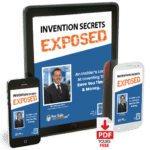What did Einstein invent?

The Einstein Inventions that are Applicable Today
Einstein was a talented and independent mathematician and a free thinker who changed how we see the universe today, thanks to his theories and vision of physics. At just 26, he showed the world his genius by publishing three papers, changing the world of science forever.
And a decade later, he would shake the physics world further with his impressive theories that time and space are dynamic and distorted, affecting how objects and light move.
Energy, Matter, Motion, Time, and Space.
Historians still refer to 1905 as the miracle year, when Einstein published four ground-breaking scientific papers covering fundamental physics problems about the nature of Matter, Energy, Motion, Time, and Space.
- The Quantum Theory of Light
In March 1905, Einstein proposed that light exists as tiny particles, which he called photons. He stated that we live in a quantum universe composed of tiny, microscopic chunks of energy and matter.
- The Brownian Motion
Einstein showed proof that atoms exist through the phenomenon of the Brownian motion; he demonstrated that tiny particles (atoms) are suspended in a fluid, and they collide with other fast but random moving particles within that fluid. This particle movement is the “Brownian Motion.”
- Special Relativity:
In March, Einstein’s paper suggested that light was made of particles (Photons) and a continuous field of waves.
Relating Matter and Energy
In 1905, Einstein demonstrated the relationship between energy and matter in the famous equation E=mc2. He proposed that the energy content of a body is equivalent to its mass multiplied by the speed of light squared.
- Equivalence of Gravity and Acceleration
In 1907, Einstein explored the relationship between gravity and acceleration; he concluded that the two are equal as two facets of the same phenomenon.
This conclusion demonstrated dualism in nature; for instance, in 1910, he explained why the sky is blue, attributing it to the cumulative effect of scattering of light by molecules present in the atmosphere.
Practical World Examples of Einstein Inventions
Einstein’s discoveries still have a massive impact in the real world, with practical applications for everyday use. These invaluable applications include:
- Satellite Navigation and Google Maps
With an internet connection, you can hardly get lost moving around, thanks to the Global Positioning System (GPS) and Satellite Navigation Systems.
These two applications utilize Einstein’s theory of relativity invention to synchronize the GPS and Satellites orbiting the Earth. And without its accurate application, the usable data would be full of errors, making GPS less useful.
- Your Phone’s Clock
Internet Service Providers (ISPs) and telephone masts use GPS to set the time. And as each GPS satellite has several atomic clocks to ensure your computer and phone’s time is always accurate.
Without such accuracy, you would probably be late or early for meetings.
- Lasers
Lasers detect proximity, making mall doors automatically open as you approach; your home security alert you of an approaching intruder; or your home’s smoke alarm to detect fires.
- Nuclear Fission
Fission is the process of splitting an atom’s nucleus to release enormous energy. Einstein’s equation E=mc2 helped develop the first atomic bomb that worked on the principle of nuclear fission, changing the future of warfare. Although this application has been used for violent extremism, it has also helped countries to enhance their defense systems and protect their borders.
- Paper Towels
Although the Scot Paper Company, Pennsylvania, introduced the disposable paper towel in 1907 as a more hygienic alternative, it was Einstein who first investigated wicking, the phenomenon of a towel soaking up liquid against gravity, wanting to drag the fluid downward.
- The Solar Panel
Based on the quantum theory of light, Einstein argued that light existed as a swarm of tiny energy pockets (photons). He observed that when a light beam struck a metal surface and the frequency was high enough, the photons could easily knock off some electrons from the metal.
A solar panel works this way: Light rays from the sun dislodge some electrons from a solar cell to higher energy levels, thus producing an electric current.
- The Physics of Financial Markets
Einstein’s invention, the Brownian motion, is a phenomenon where atoms suspended in a fluid collide with other fast and randomly moving particles within that same fluid. The stock market works just the same way.
Using the fluctuation-dissipation theorem that Albert Einstein developed, stock traders can predict the price fluctuations in the financial markets, as the two are similar. Since the 1970s, Einstein’s equations have been applied on Wall Street.
Albert Einstein’s Patents
Einstein obtained patents in collaboration with some prolific inventors. These patents include refrigerators, sound reproduction apparatus, electromagnetic pumps, and light intensity self-adjusting cameras, and they covered at least seven countries.
- Einstein’s Refrigerator (The Einstein-Szilard)
The Einstein refrigerator uses water, ammonia, and butane and is an improvement of the three-fluid patent by Swedish inventors Carl Munters and Baltzar Von Platen. The fridge operates at constant pressure, without moving parts, and requires only a heat source. Einstein and his former student Leó Szilárd obtained the patent in 1926.
- Einstein’s Sound Reproduction Apparatus
Together with German inventor Rudolf Goldschmidt, the two set out to design and produce an electro-acoustical hearing aid. The idea was to convert acoustic signals into electrical oscillation, transmitting the signal through a thin membrane attaching to the skull so that the bone could conduct the signal to the hearing organ.
The duo successfully applied for a patent for the electro-acoustical hearing aid in 1934.
- Einstein’s Light Intensity Self-Adjusting Cameras
This time, Einstein worked with Gustav Peter Bucky, his longtime friend, to successfully create a camera that automatically adjusts to ambient light intensity. In the camera, light struck a photoelectric cell that powered a shaft connecting to screens of different transparency.
And depending on the intensity, the cell would adjust which screen switched in front of the primary lens. Modern professional cameras are enhanced versions of Einstein’s camera; they adjust to the proper aperture and exposure automatically.
- Einstein’s Electromagnetic Pump
Electromagnetic induction moved conductive liquid metal without using electrodes to compress pentane, a liquid induction motor.
Bottom Line
Albert Einstein was one of the early pioneers of modern physics, best known for developing the theory of quantum physics and the theory of relativity. And modern scientists still use Einstein’s pioneering research to make new inventions.
Fun Fact: Did you know that Albert Einstein had a terrible memory and could not remember dates and even his phone number? And as a child, his parents worried about him, thinking he might be mentally unstable because he could not speak until he was four. Interestingly, he broke his long silence at dinner one night by saying, “the soup is too hot,” leaving his parents very surprised.
In addition, Einstein never touched his Nobel Prize money; instead, he gave it all to his former wife, Mileva, as part of their divorce settlement, where she put it in a trust for his sons. She could not touch the money, but she could use the interest from the savings.








